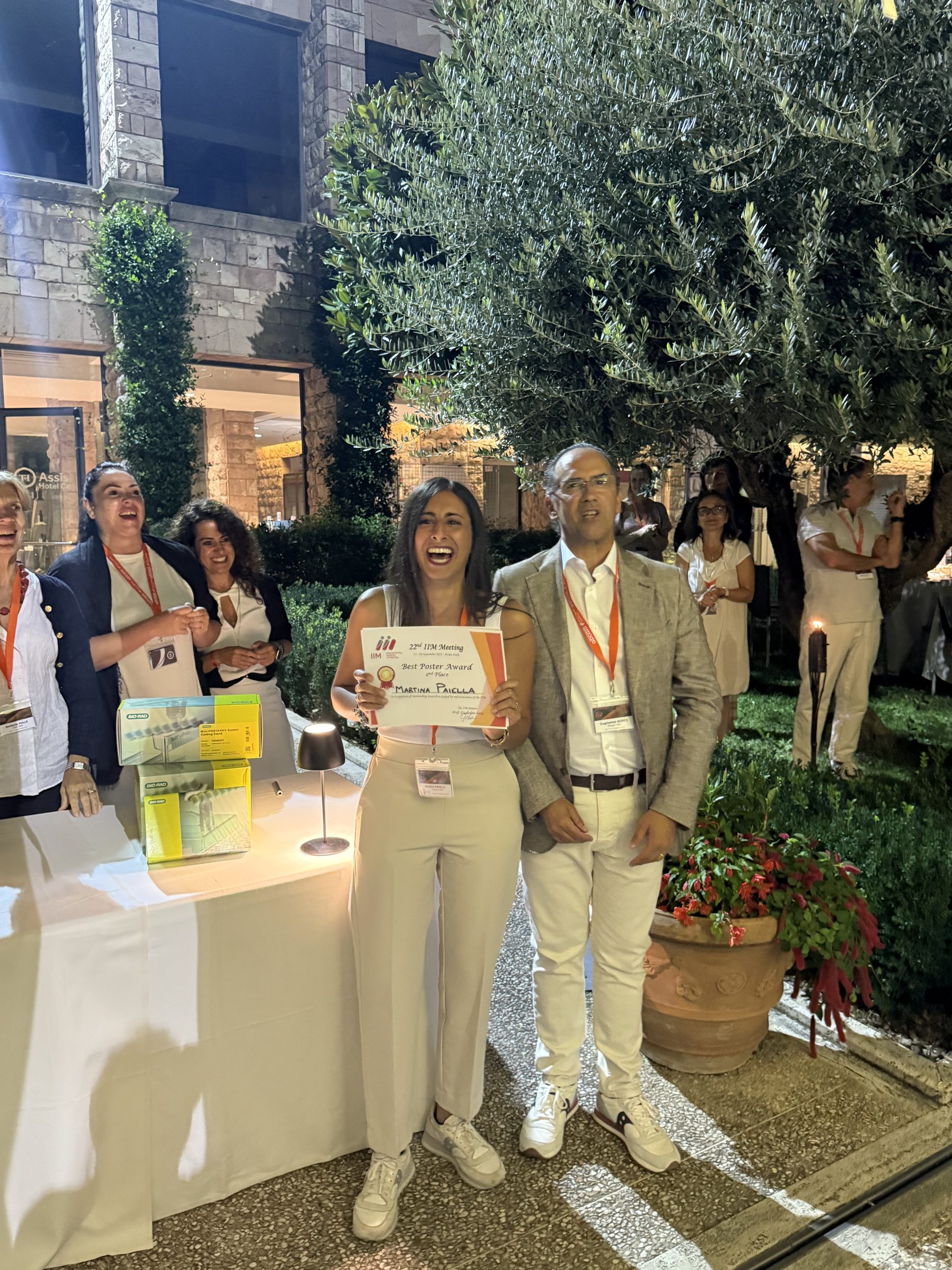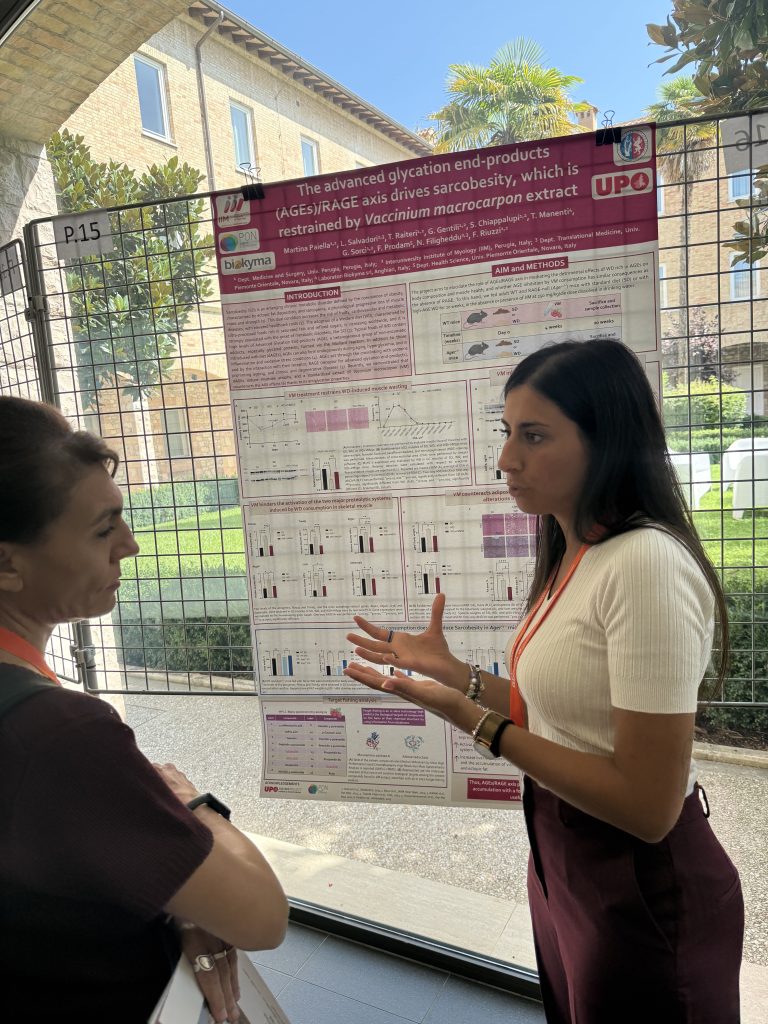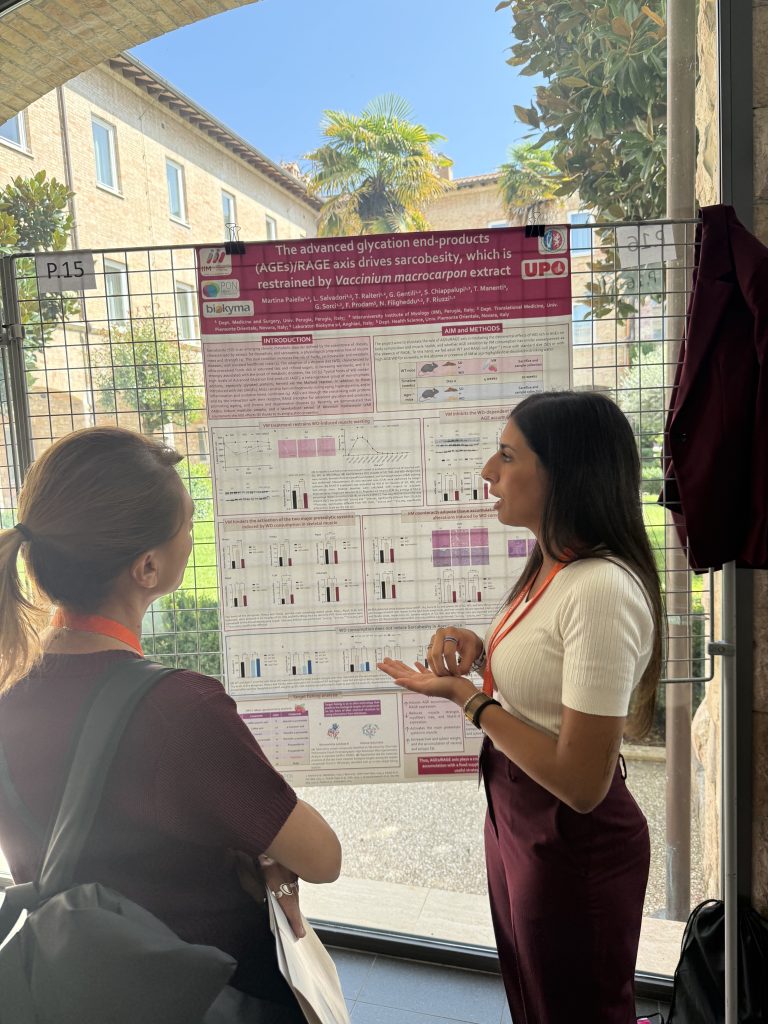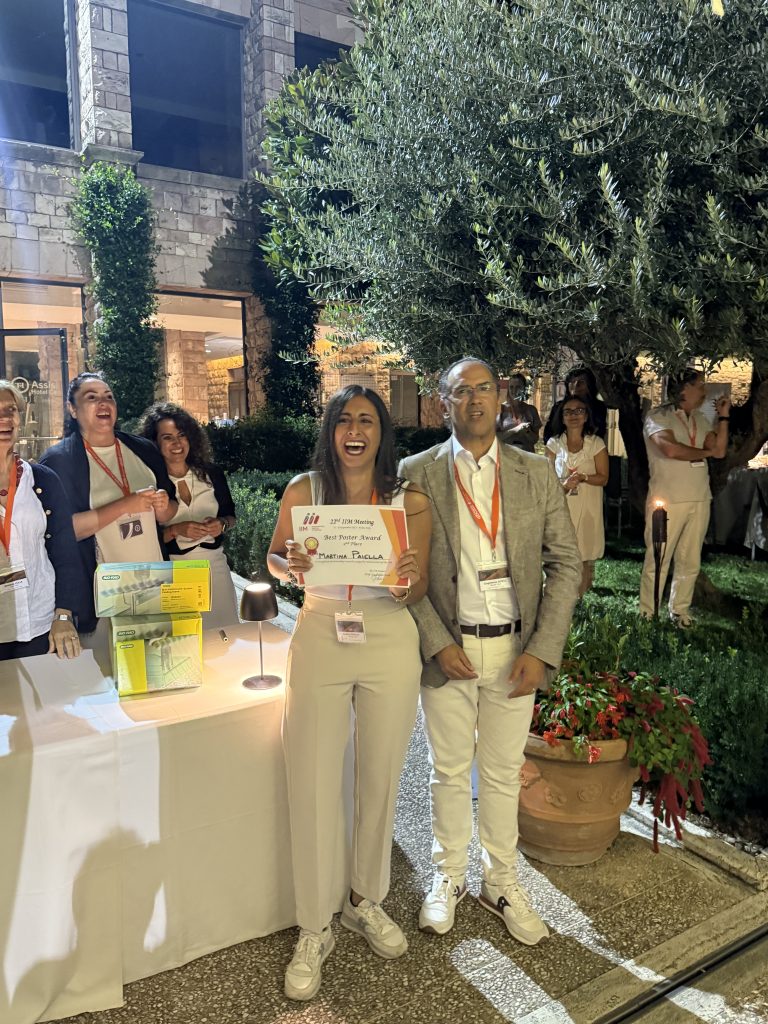
20 Set Awarded Second Place for Best Poster at the 22nd International Congress of the International Institute of Myology
We are proud to announce that the article “Protective Effects of Vaccinium macrocarpon on Advanced Glycation End Product (AGE)-Induced Skeletal Muscle Atrophy: In Vitro and In Vivo Evidence”, presented by Martina Paiella, received second place for Best Poster Awards at the 22nd International Congress of the International Institute of Myology.
The awarded research addresses a topic of growing importance in the field of muscle health and aging: the accumulation of Advanced Glycation End Products (AGEs)—a heterogeneous group of compounds formed through the non-enzymatic glycation of macromolecules such as proteins, lipids, and DNA. These molecules alter protein structure and function, disrupting cellular signaling and protein quality control pathways.
AGEs, Western Diet, and Sarcopenia
AGEs are formed both endogenously (eAGEs) through normal metabolism and exogenously (dAGEs) through diet—particularly through a Western Diet (WD) rich in ultra-processed foods, saturated fats, refined sugars, and salt. The accumulation of AGEs significantly contributes to the development of age-related diseases, including sarcopenia, the loss of muscle mass and function associated with aging.
These compounds cause tissue damage primarily through their interaction with the RAGE receptor, triggering pro-inflammatory signaling pathways.
The Protective Role of Vaccinium macrocarpon
Recent studies have identified natural compounds as potential allies in the prevention of aging-related disorders. Among these, Vaccinium macrocarpon (VM), commonly known as the American cranberry, has shown promising activity in inhibiting AGE formation and activity.
The study presented by Martina Paiella investigated the harmful effects of both eAGEs and dAGEs in vitro on murine C2C12 myotubes, and in vivo in aged mice fed a diet enriched with 21% butter fat—a known source of dAGEs. The findings demonstrated that VM extract is capable of counteracting the detrimental effects of AGEs, offering a potential nutraceutical strategy to prevent AGE-induced muscle atrophy.
A Significant Recognition for Research
The prestigious recognition received at the international congress marks an important milestone in the field of myology research, emphasizing the importance of understanding the molecular mechanisms underlying muscle aging and exploring viable intervention strategies.
We extend our warmest congratulations to Martina Paiella for her outstanding work and for making a valuable and innovative contribution to the international scientific community.






